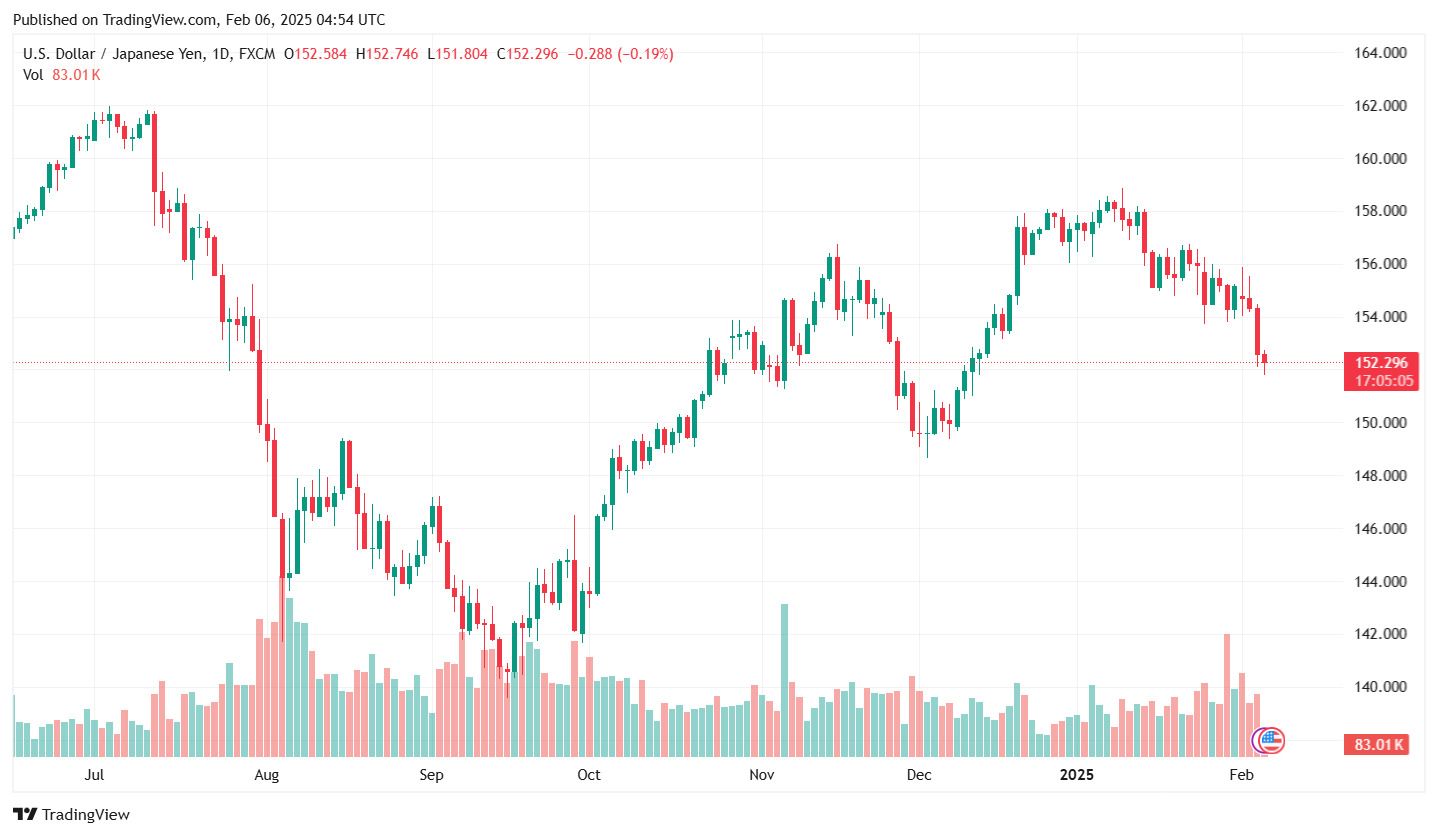Japanese Yen Continues to Gain Against USD, Bulls Take Control
The Japanese yen (JPY) rose to its highest level since December 12 against the US dollar on February 6, as expectations grew that the Bank of Japan (BoJ) would continue to raise interest rates. These predictions were reinforced after Japanese wage data released on Wednesday showed a better-than-expected increase.
Meanwhile, the US Federal Reserve (Fed) is likely to cut interest rates later this year. This narrows the interest rate gap between the US and Japan, making the Yen more attractive to investors.
In addition, falling US government bond yields weighed on the US dollar, sending USD/JPY down for a third consecutive day. However, there were still some factors that kept the yen from rising, such as concerns that Japan could be a future tariff target for US President Donald Trump. In addition, the optimistic market sentiment also limited demand for the yen, which is considered a safe haven asset. As a result, USD/JPY recovered slightly by about 40 pips from its intraday low of around 151.80.
Yen supported, may continue to rise
Data released on Wednesday showed real wages in Japan rose, adding to expectations that the BoJ will continue to raise interest rates.
Japanese Finance Minister Katsunobu Kato also said prices would continue to rise, although Japan has not officially escaped deflation.
A BoJ board member, Tamura Naoki, also said the central bank needs to raise interest rates by at least 1% in the second half of fiscal 2025.
Currently, the market is pricing in a 94.8% chance that the BoJ will raise interest rates by 0.25% at its September meeting.
Meanwhile, in the US, the market is predicting that the Fed may cut interest rates twice by the end of this year, as the US economy is showing signs of slowing down.
Tuesday's JOLTS jobs report showed that the number of job vacancies in the US fell from 8.09 million to 7.6 million in December. Additionally, data from the Institute for Supply Management (ISM) showed that the service sector continued to expand but at a slower pace than the previous month.
The ISM Services PMI fell from 54.0 to 52.8 in January, the Prices Paid index fell from 64.4 to 60.4, while the Employment index edged up from 51.3 to 52.3.
These data caused US government bond yields to fall, leading to a weakening of the USD and continued pressure on the USD/JPY exchange rate.
Even as the ADP jobs report showed the private sector added 183,000 jobs in January (up from the previous month), the dollar failed to recover significantly.
Fed Vice Chairman Philip Jefferson said he wants to keep interest rates unchanged and wait to see what the Trump administration's policies will do.
Today, the market will be watching the Challenger job cuts report and weekly jobless claims data to further assess the US economic situation. However, the main focus remains on the important jobs report - Nonfarm Payrolls (NFP) scheduled to be released next Friday.

According to Lao Dong's records at 12:00 on February 6, 2025, the Yen decreased to 152.296 USD/JPY, meaning 1 USD can be exchanged for about 152 JPY.











